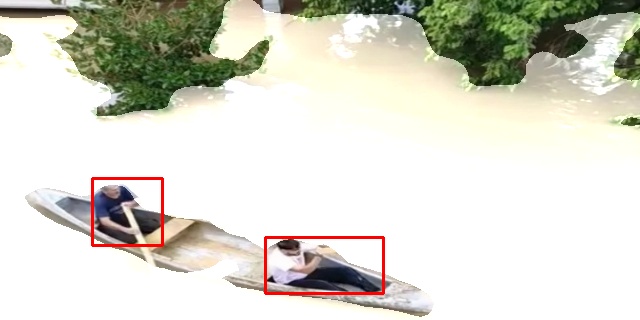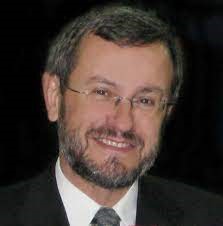DESCRIPTION
This short course on Big Data Analytics for Natural Disaster Management (NDM) provides a comprehensive overview and in-depth presentation of advanced technologies involved in the acquisition and analysis of Big Data for NDM. NDM can be greatly improved by developing automated means for precise semantic mapping and phenomenon evolution predictions in real-time. Several extreme data sources can significantly help towards achieving this goal: a) autonomous devices and smart sensors at the edge, equipped with AI-capabilities; b) satellite images; c) topographical data; d) official meteorological data, predictions or warnings published in the Web; and e) geosocial media data (including text, image and video). Such heterogeneous data sources provide a prime extreme data example: a) they are diverse; b) voluminous; c) fast and frequently updated; d) complex; e) multilingual; f) have very disperse sources (satellite, drone, sensors, social media, maps); and h) have extreme values.
The course consists of ten lectures, covering important topics and presenting state-of-the-art technologies in: a) Big Data acquisition using sensors, drones, satellites, the Web and social media platforms; b) Big Data analysis based on Deep Learning; c) accurate phenomena modeling; and d) analysis, forecasting and risk management for improved NDM. The presented technologies find practical application in developing an advanced NDM support system that dynamically exploits multiple data sources and AI technologies for providing an accurate assessment of an evolving crisis situation.
Course Material
Please find below the course material, including PDF presentations and videos of each lecture.
- Ioannis Pitas, Sensors and Big Data Analytics for NDM
- Nikolaos Militsis: Drone imaging for NDMs
- Jose Ramiro Martinez De Dios, Forest Fire Monitoring and Measuring with Multiple Cooperating Drones
- Panagiotis Katsaros, Maestro: Forecasting and Risk Management in Forest Fires via IoT Technologies
- Giovanni Giacco, Deep Learning for Post-Earthquake Safety Evaluation of Masonry Buildings
- Antonio Filograna, Data Storytelling and Big Data value chain in Natural Disaster Management
- Resch Bernd, Multimodal Analysis of Geo-social Media Data for Improved Disaster Management: From Science to Digital Practice
- K Larnier, J Coves, G Stephan and L. Dumas, Flash flood modeling and in urban areas using High Resolution hydrodynamic model and machine learning models
- Evangelos Spatharis, Simulation of forest fires and floods (demo presentation)
PROGRAM
| Time (EET) |
Lecture |
Lecturer |
|
08:35-09:05 |
Sensors and Big Data Analytics for NDM |
Ioannis Pitas (AUTH) |
| 09:05-10:00 | Drone imaging for NDMs | Nikolaos Militsis, (AUTH) |
| 10:00-11:00 | Forest Fire Monitoring and Measuring with Multiple Cooperating Drones | Jose Ramiro Martinez De Dios (U Seville) |
| 11:00-11:30 | Break | |
| 11:30-12:30 | Maestro: Forecasting and Risk Management in Forest Fires via IoT Technologies |
Panagiotis Katsaros (AUTH) |
| 12:30-13:30 |
Deep Learning for Post-Earthquake Safety Evaluation of Masonry Buildings |
Giovanni Giacco (Latitudo40) |
|
13:30-14:00 |
Break |
|
| 14:00-15:00 | Data Storytelling and Big Data value chain in Natural Disaster Management | Antonio Filograna (Engineering) |
| 15:00-16:00 | Multimodal Analysis of Geo-social Media Data for Improved Disaster Management: From Science to Digital Practice | Resch Bernd (PLUS) |
| 16:00-17:00 | From Cloud to Edge through Microservices | Massimo Villari (UNIME) |
| 17:00-18:00 | Flash flood modeling and in urban areas using High Resolution hydrodynamic model and machine learning models | Jacques Coves (CS GROUP) |
|
18:00-18:30 |
Simulation of forest fires and floods (demo presentation) | Evangelos Spatharis (AUTH) |
WHEN?
The course will take place on Wednesday, 13 December 2023.
WHERE?
Hybrid event
All lectures and workshops will be delivered on-site in KEDEA buidling or remote via Zoom (Passcode: 405011).
You can find additional information about the city of Thessaloniki and details on how to get to the city here.
REGISTRATION
CS/ECE/EE/AI students/scientists, engineers as well as AI enthusiasts from other scientific disciplines having the necessary mathematical background are welcomed to register free of charge on a First-Come-First-Serve basis.
Please click to the following button.
For AIDA students only: On the top of the above registration, we strongly encourage you to also enroll in this course through the AIDA website, so that a successful attendance of this course appears in the AIDA Certificate of Course Attendance.
SUPPORTED BY
This short course is supported by TEMA. & AI.BIG cluster.
LECTURES
Ioannis Pitas, Sensors and Big Data Analytics for NDM
Abstract: Natural Disaster Management (NDM, e.g., for wildfires, floods) can be greatly improved by automating precise semantic 3D mapping and disaster evolution prediction to achieve NDM goals in near-real-time. To this end, many heterogeneous extreme data sources must be analyzed and fused: smart drone sensors (e.g., RGB, RGBD and thermal cameras, Lidars, motion sensors), emergency vehicle sensors (similar sensors but equipped with more computing power) and in-situ sensors (smoke sensors, moisture sensors, water flow meters), meteorological sensors, remote sensing data, topographical data, and geosocial media data (text, image and videos). The lecture focus is on a) how to efficiently manage such a heterogeneous and mobile sensor network, including intelligent sensor placement and b) how to analyze the resulting data having extreme nature, due to their varying resolution and quality, very large volume and update rate, different spatiotemporal resolutions and acquisition frequencies, real-time needs and multilingualism. Extreme data analytics can help developing an integrated, ground-breaking NDM platform, focusing on real-time semantic extraction from multiple heterogeneous data modalities and sources, on-the-fly construction of a meaningful semantically annotated 3D disaster area map, prediction of disaster evolution and improved communication between service providers and end-users, through automated process triggering and response recommendations. Semantic analysis computations will be distributed across the edge-to-cloud continuum, in a federated manner, to minimize latency. Extreme data analytics will be performed in a trustworthy and transparent way, by greatly advancing state-of-the-art AI and XAI approaches. The constantly updated 3D map and the disaster evolution predictions will form the basis for an advanced, interactive, Extended Reality (XR) interface, where the current situation will be visualized and different response strategies will be dynamically evaluated through simulation by NDM personnel. An innovative, scalable and efficient implementation platform will provide precise NDM support, based on extreme data analytics.
Abstract: Real-time forest fire perception, monitoring and measuring is a very complex problem of that requires the fusion of different types of sensors and cameras. Using several cooperating aerial robots (drones) is an ideal approach to gather high quality images and measurements at different vantage points suitable for fire status estimation and to process them in a decentralized manner exploiting on-board drone computation capacity. This presentation will summarize different approaches, schemes, methods and will present some results obtained in wildfire experiments.
Panagiotis Katsaros, Maestro: Forecasting and Risk Management in Forest Fires via IoT Technologies
Abstract: The Maestro telemetry system predicts forest fire risk based on geolocated weather data collected by sensor nodes. Sensor nodes provide a low-cost solution to reliably monitor the microclimate of forested areas and to correlate the current conditions with possible prolonged drought. In case of fire, nodes fall into emergency mode by transmitting more frequent measurements to support real-time prediction of how the fire spreads, for effectively managing the available firefighting forces and for implementing appropriate population evacuation plans.
Giovanni Giacco, Deep Learning for Post-Earthquake Safety Evaluation of Masonry Buildings
Abstract: Natural disasters present multifaceted challenges that necessitate swift and accurate responses. In the realm of post-earthquake safety assessments, the rapid and precise evaluation of damages is pivotal to ensure the optimal allocation of resources and facilitate effective emergency management. Many earthquake-prone nations employ standardized forms, such as the Italian AeDES, New Zealand Earthquake Rapid Assessment, and American ATC-20 Rapid Evaluation Safety Assessment, to capture and analyze damage data during inspections. However, the manual compilation of these forms can be error-prone, leading to potential misrepresentations of the actual damage scenario. The lecture introduces a Deep Learning-based methodology designed to enhance the accuracy and efficiency of these assessments. The tool can recognize, localize, and quantify damages by processing and analyzing drone photos of the affected buildings. Participants will gain insights into the methodology of this approach, its real-world applications, and its potential to reshape the future of natural disaster management using big data analytics.
Antonio Filograna, Data Storytelling and Big Data value chain in Natural Disaster Management
Abstract: This lecture explores the concepts of Data Storytelling and the Big Data value chain in the context of Natural Disaster Management. It delves into the significance of effectively communicating data to inform decision-making and seeks to uncover the potential of utilizing big data to improve disaster response and mitigation efforts. The lecture discusses the challenges posed by natural disasters and the need for comprehensive data analysis to understand their impacts. It presents Data Storytelling as a powerful tool to present complex data in a compelling and understandable manner, empowering stakeholders to make informed choices. Furthermore, the lecture examines the Big Data value chain, emphasizing its components such as data acquisition, storage, processing, analysis, visualization, and interpretation, and their crucial role in disaster management. It highlights how this chain can enable improved situational awareness, early warning systems, resource allocation, and risk assessment. Through a combination of case studies and interactive discussions, the lecture aims to equip participants with the knowledge and skills to harness the potential of data storytelling and the big data value chain to enhance natural disaster management strategies.
Abstract: The challenges that emergency services face when dealing with disasters are becoming increasingly complex. Thus, methods of analysing new digital information for situation assessment and operational planning is of crucial importance. This talk presents an approach for multi-modal analysis of digital data such as geo-social media posts using artificial intelligence (AI), helping to ensure the protection and rescue of people and critical infrastructure. The approach presented aims at the AI-supported and automated analysis of this data so that holistic, spatio-temporal situation information is available to end users. It fuses information from social media including semantic topics, sentiments and emotions, spatial hot spots, and temporal changes.
The talk outlines the potential of digital data analysis for operational practice: The research results were tested in a realistic application during a large-scale disaster exercise with around 900 emergency staff. The large-scale exercise, coordinated by an professional operations team, was designed around a once-in-a-century flood event and included four operational phases, namely a building collapse, flooded buildings, the derailment of a dangerous goods train, and people floating in a river. The results of the exercise demonstrate that digital data sources can provide crucial added value for situation assessment and staff work, both in terms of rapid situation assessment and efficient resource and operational planning.
Massimo Villari, From Cloud to Edge through Microservices
Abstract: Cloud Computing during the time has gained concrete evidence to be a disruptive technology still in its full development. Many drawbacks of the Cloud have brought to improve many their crucial aspects, like performance, security and privacy, etc. Today Edge Computing try to deal with these implications to make them less problematic and much more feasible. Starting from the NIST definition (IaaS, PaaS and SaaS), the talk looks at the last decade of ICT evolution preparing the systems for new ICT challenges and implementations, like AI algorithms on top of them.
Abstract: Modeling flash floods in urban areas with complex topography is always challenging. Considering fine-scale hydrodynamic 2D shallow water model to perform simulations requires a lot of manual or semi-automatic data processing before being able to run simulations. This involves the transformation of high-resolution Digital Surface Model (Lidar) into a Digital Elevation Model that conserves the main hydraulic properties of the ground (culverts, weirs, barriers, etc) as well as accurate delineation of the streets and buildings, etc.
In the context of the ExtremeXP project funded by the European Commission we assess the role of machine learning to improve the simulation and nowcasting (forecast with short term horizon) of flash flood events in the city of Nîmes in the South of France. First, we prepare all relevant datasets to design a fine scale 2D hydrodynamic model and then we calibrate it on several historical flood events. Once this model is calibrated and validated, we use it as a reference for conducting several scenarios of improvements using machine learning model. Two kinds of scenarios are analyzed. In the first kind lie all the machine learning techniques that would facilitate the design of the hydrodynamic model by either reducing the number of input data or reducing the necessary data transformation processes. The second kind of scenario consists in designing surrogates for the reference hydrodynamic model itself for nowcasting flood propagation during an event.
Evangelos Spatharis, Simulation of forest fires and floods (demo presentation)
Abstract: By using Unreal Engine for the creation of virtual environments we are able to simulate fire and flood scenarios with high accuracy and by using virtual UAVs we collect big virtual datasets. Mixing the virtual data with real-world data and training state-of-the-art machine learning models we hope to be able to detect real-world fires and floods with high precession.
LECTURERS AND TUTORS
Prof. Ioannis Pitas (AUTH)
Prof. Ioannis Pitas (IEEE fellow, IEEE Distinguished Lecturer, EURASIP fellow) received the Diploma and Ph.D.Degree in Electrical Engineering, both from the Aristotle University of Thessaloniki, Greece. Since 1994, he has been a Professor at the Department of Informatics of the same University. He served as a Visiting Professor at several Universities. His current interests are in the areas of image/video processing, machine learning, computer vision, intelligent digital media, human centered interfaces, affective computing, 3D imaging and biomedical imaging. He is also chair of the Autonomous Systems initiative.
Prof. Jose Ramiro Martinez De Dios
José Ramiro Martínez-de Dios is Full Professor at the University of Seville (Spain). His R&D activities are focused mainly on aerial robot perception, multi-robot cooperation, robot localization and mapping, and sensor fusion. He has authored or co-authored >160 publications on these topics, including 4 full books. He has also coordinated >22 R&D projects and has participated in other >85 R&D projects, including >24 projects funded by the European Commission in FPIV, FPV, FPVI, FP7, H2020, and Horizon Europe. He led and participated in >25 technology transfer contracts to companies such as AIRBUS, BR&TE, or IBERDROLA, among others. He has served as member of the Editorial Board of >10 journals, and TPC member in >70 conferences and workshops. He has received or co-received 5 international awards, including the “Best Drone-based Solution” award in the 1st EU Drone Awards. Since February 2023 he is an elected member of the Board of Directors of euRobotics.
Nikolaos Militsis
Militsis Nikolaos Marios holds a Diploma of Engineering from the Faculty of Engineering at Aristotle University of Thessaloniki (AUTH). He obtained his Master’s degree from the Department of Informatics at Digital Media & Computational Intelligence.
He is a PhD candidate at the Department of Informatics also working as a Research Assistant at the Artificial Intelligence and Information Analysis laboratory. His research activities primarily revolve around exploring and developing innovative approaches using deep learning techniques and computational intelligence methods to address challenges in computer vision tasks.
Dr. Christos Papaioannidis
Dr. Christos Papaioannidis received the Diploma in Electrical & Computer Engineering (2015) and the Ph.D. Degree (2023) in Computer Science, both from the Aristotle University of Thessaloniki, Greece. He is currently a Postdoctoral researcher at the Artificial Intelligence and Information Analysis laboratory, at the Department of Informatics of the same University. He has co-authored more than 13 papers in academic journals and international conferences. His research interests include machine learning, deep learning and computer vision.
Prof. Panagiotis Katsaros
Prof. Panagiotis Katsaros received the bachelor’s degree in mathematics from the Aristotle University of Thessaloniki (AUTh), Greece, the Master of Science degree in software engineering from Aston University, Birmingham, and the Ph.D. degree in computer science from AUTh. He is an Associate Professor with the School of Informatics, AUTh. He has published over 100 research papers in international journals and conference proceedings on software engineering. His research interests include the formal verification of software/systems, the model-based design, the analysis of dependability and security, and the simulation-based performance analysis and optimisation. He is a coordinator (or participates) in national and European research and development projects focusing on engineering of software for the Internet of Things systems, space systems, and more recently autonomous systems. Regular updates on his recent research achievements can be accessed online at https://depend.csd.auth.gr
Giovanni Giacco
Chief Technology Officer and Research Engineer at Latitudo 40 with over a decade of experience in the tech sector. He is currently finishing his PhD program at the PICUS Lab at the University of Naples Federico II. His main research field of interest is the application of Artificial Intelligence techniques for Earth Observation applications, in particular, combining Geospatial Data Analytics, Machine Learning, and Deep Learning.
Antonio Filograna
Antonio is a Senior researcher and Project Manager at Engineering Ingegneria Informatica S.p.A. He is an expert in ICTs with special skills in areas like Open & eGovernment, Social Innovation, Smart City, Data Protection and Privacy-preserving technologies, Cloud Computing, Architectural Design, Policy making. He has been involved in several European and Italian research projects dealing with several domains (public service for PA, smart mobility, smart environment, energy, FIWARE architecture) as project manager, technical designer, work package and task leader. At present, he is the Project Coordinator of DECIDO project (H202-SC6-GOVERNANCE-2020), he is also involved in SPOTTED project (CEF-TC-2020-2 Public Open Data 2021-2024) and TEMA project (HORIZON-CL4-2022-DATA-01-01) as technical leader.
Linkedin: https://www.linkedin.com/in/antoniofilograna/
Twitter: https://twitter.com/afilograna
Prof. Bernd Resch
Bernd Resch is an Associate Professor at University of Salzburg’s Department of Geoinformatics – Z_GIS and a Visiting Scholar at Harvard University (USA). He heads the Geo-social Analytics Lab and the iDEAS:lab. Bernd Resch did his PhD in the area of “Live Geography” (real-time monitoring of environmental geo-processes) together with University of Salzburg and MIT. His research interest revolves around understanding cities as complex systems through analysing a variety of digital data sources, focusing on developing geospatial machine learning algorithms to analyse human-generated data like social media posts and physiological measurements from wearable sensors. The findings are relevant to a number of fields including urban research, disaster management, epidemiology, and others. Bernd received the Theodor Körner Award for his work on “Urban Emotions”. Amongst a variety of other functions, he is an Editorial Board Member of IJHG, IJGI and PLOS ONE, a scientific committee member of various international conferences (having chaired several conferences), speaker of the Faculty of Digital and Analytical Sciences at PLUS, and an Executive Board member of Spatial Services GmbH.
Prof. Massimo Villari
Massimo Villari is Full Professor in Computer Science at University of Messina (Italy). He is actively working as IT Security and Distributed Systems Analyst in Cloud and Edge Computing, virtualization and Storage, Federated Learning and one of the creators of Osmotic Computing Paradigm. For the EU Projects “RESERVOIR” he leaded the IT security activities of the whole project. For the EU Project “VISION-CLOUD” and “H2020-BEACON”, he covered the role of architectural designer for UniME. He was Scientific ICT Responsible in the EU Project frontierCities, the Accelerator of FIWARE on Smart Cities – Smart Mobility. He is strongly involved in EU Innovation initiatives, and also, he covers the role of EU external expert. Currently, he is Scientific ICT Responsible for UniME of “TEMA” and “NEUROKIT-2E” Horizon Europe Projects. He is co-author of more of 250 scientific publications and patents in Cloud Computing (Cloud Federation), Distributed Systems, Wireless Network, Network Security, Cloud Security and Cloud, Edge and IoTs, and recently in Osmotic Computing and AI. He was General Chair of ESOCC 2015 and IEEE-ISCC 2016. In 2014 he was recognized by an independent assessment (IEEE Cloud Computing Transaction, Issue April 2014) as one of World-Wide active scientific researchers, top 27 classification, in Cloud Computing Area. He was General Chair of IEEE-ICFEC 2019 and General Co-Chair in IEEE-CCGRID2022. He was also General Chair of IEEE ISCC2022, and ACM/IEEE UCC2023 and ACM/IEEE BDCAT2023 and will be GC of IEEE ISCC2024. He is in the Stanford World’s Top 2% Scientists list of the Stanford University in Computer Science. He is a Co-Founder of UniME Spin-Off Alma Digit S.R.L since 2017. He was Rector delegate on ICT for whole University of Messina and Academic and Consultant for the Messina Municipality in the Area of Smart Cities. Currently he is the Head of Computer Science and Data Science Schools.
Jacques Coves
After 20 years in the satellite mission control segment, Jacques COVES activities are dedicated to Earth-Observation applications, specially hydrologic studies and systems. He is acting as project director and business developer in CS GROUP for all hydro related projects.
Evangelos Spatharis
Evangelos Spatharis is an undergraduate at the computer science department, faculty of sciences at the Aristotle University of Thessaloniki. Currently, his main research interests consist of creating virtual environments for data gathering and simulation, training and using state-of-the-art machine learning models and biosignal analysis.
COURSE EVALUATION FORM
Please find and, if you wish, complete the evaluation form:
https://docs.google.com/forms/d/1RCZOZ9S9wv565axb72_rARZ5e_PdfWWJA72AsZKysJQ/edit
















